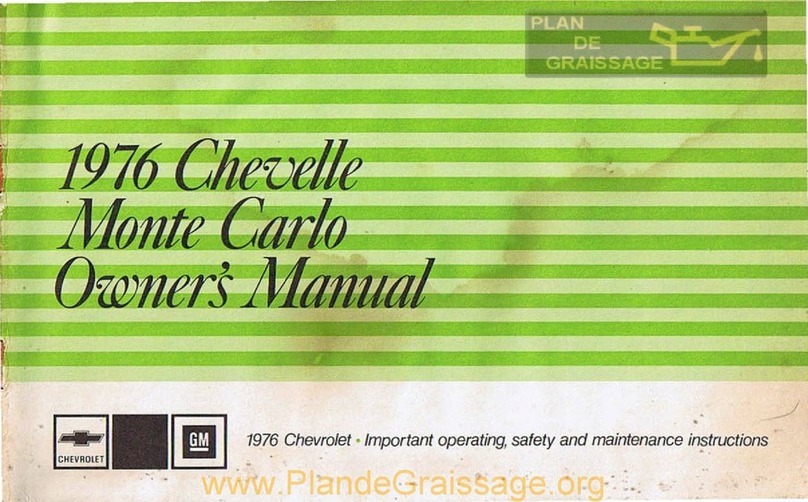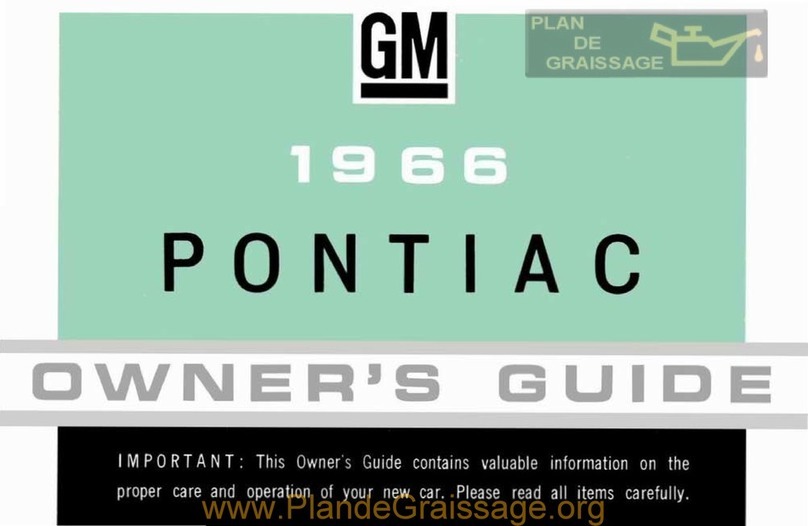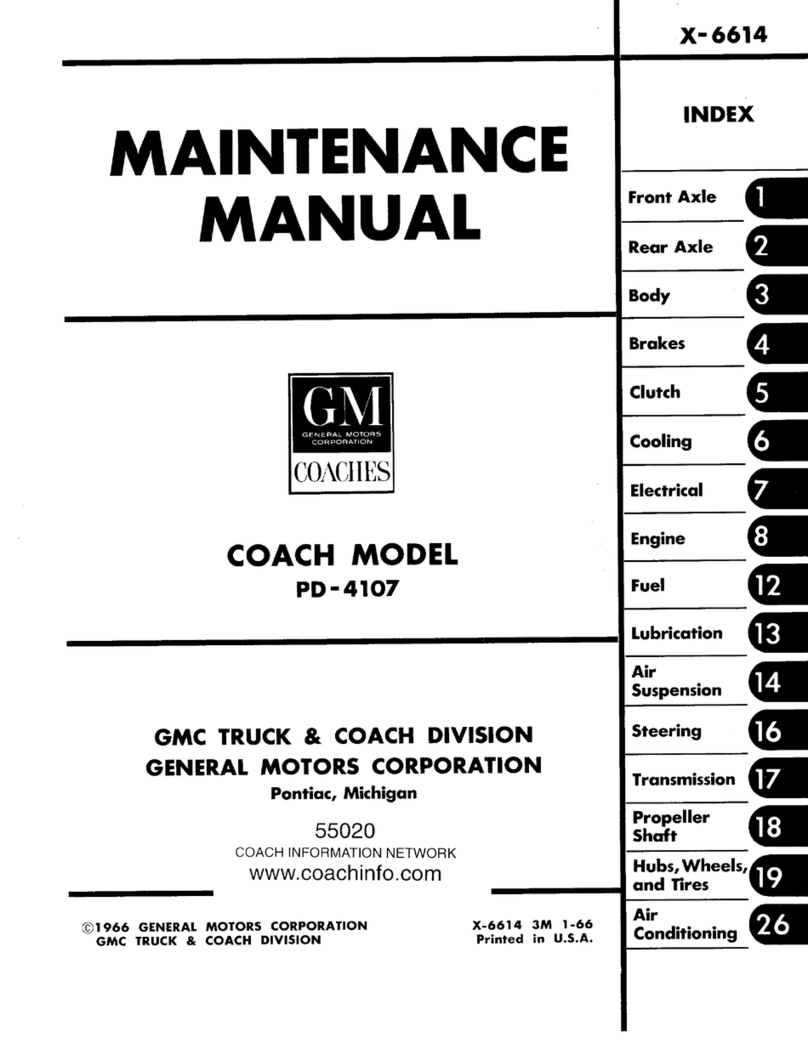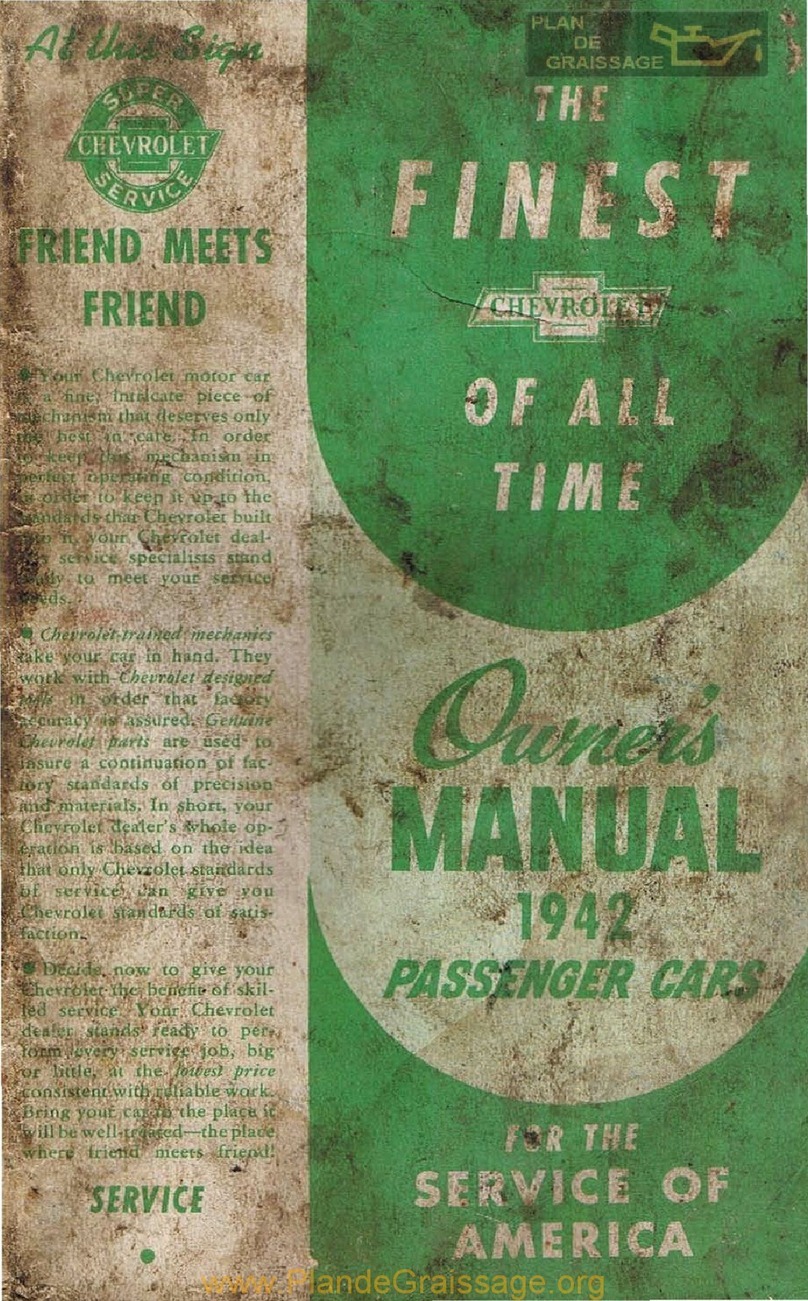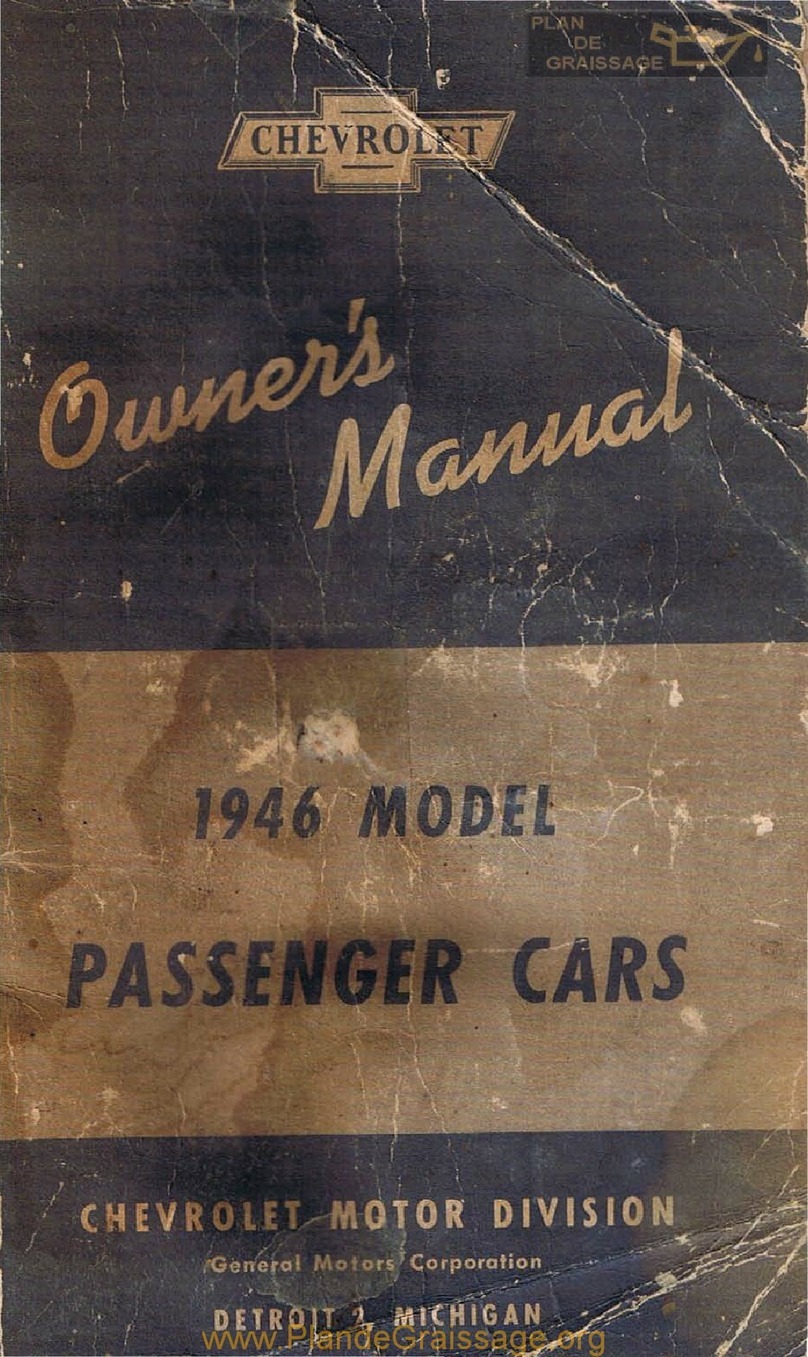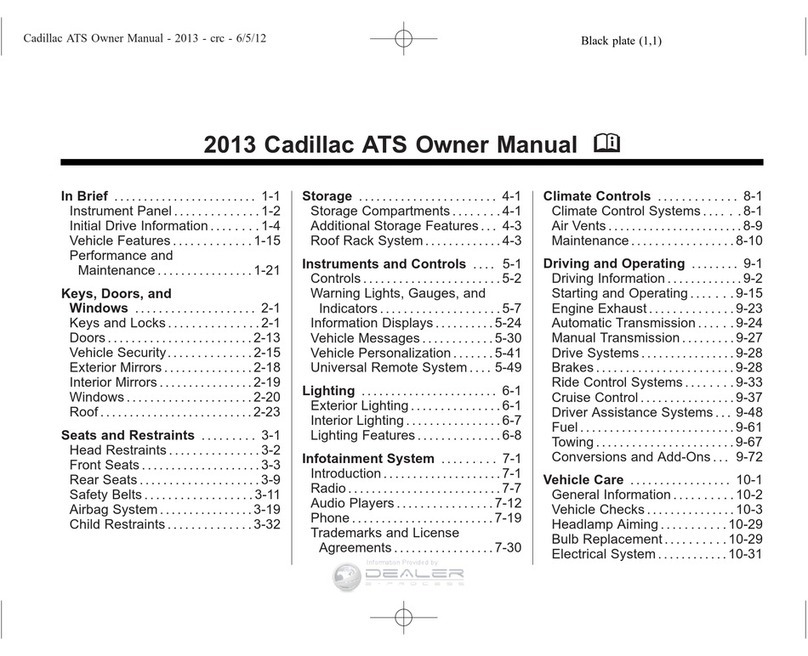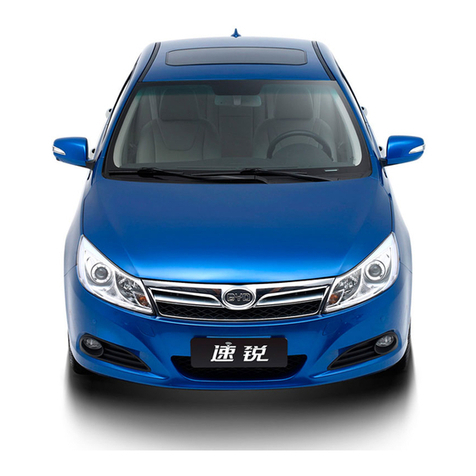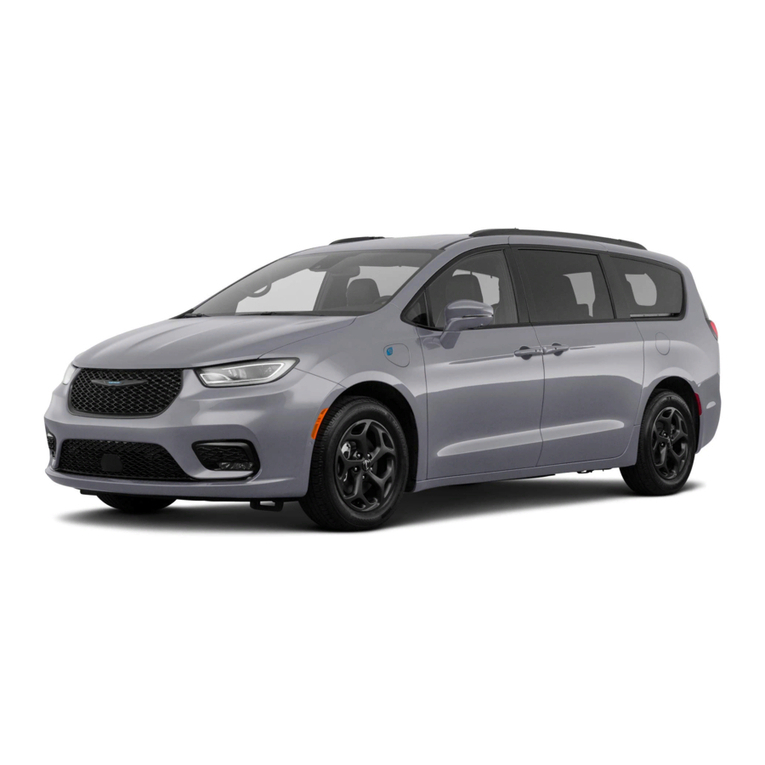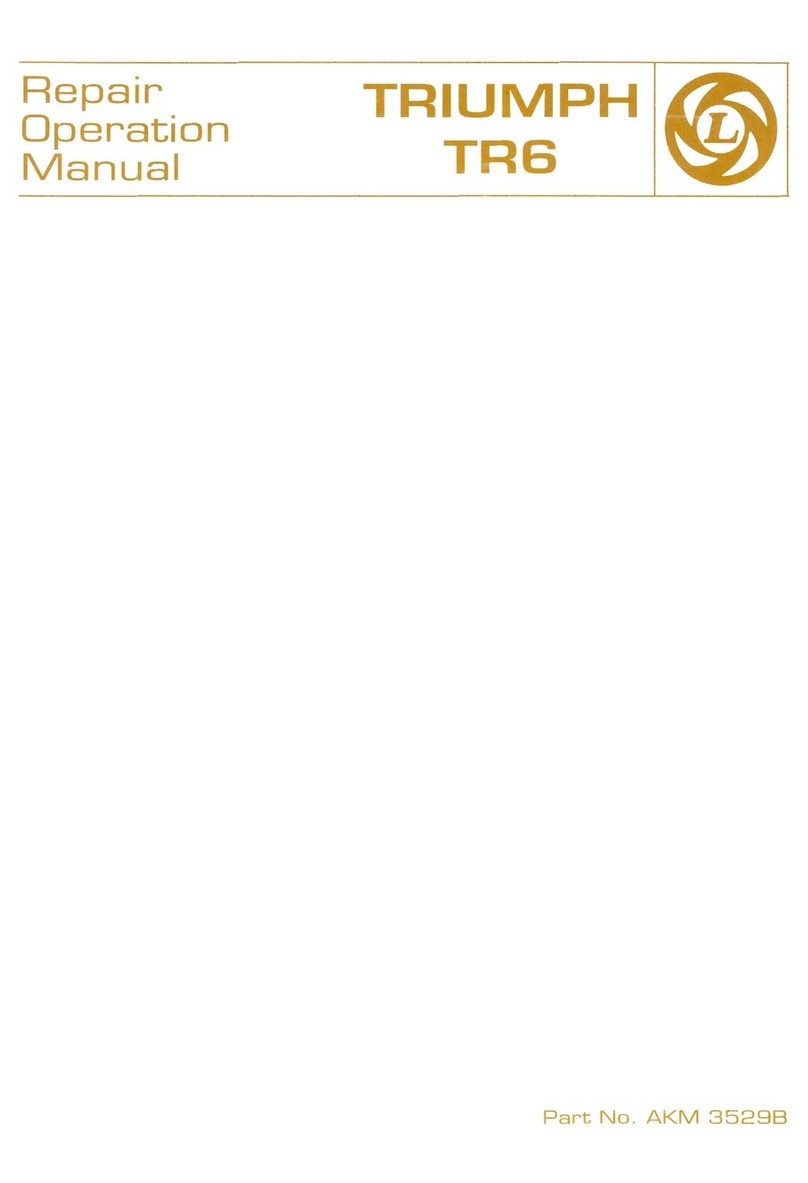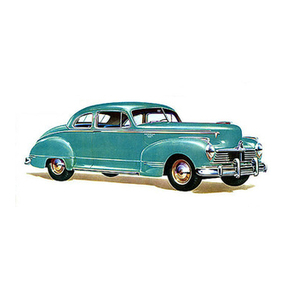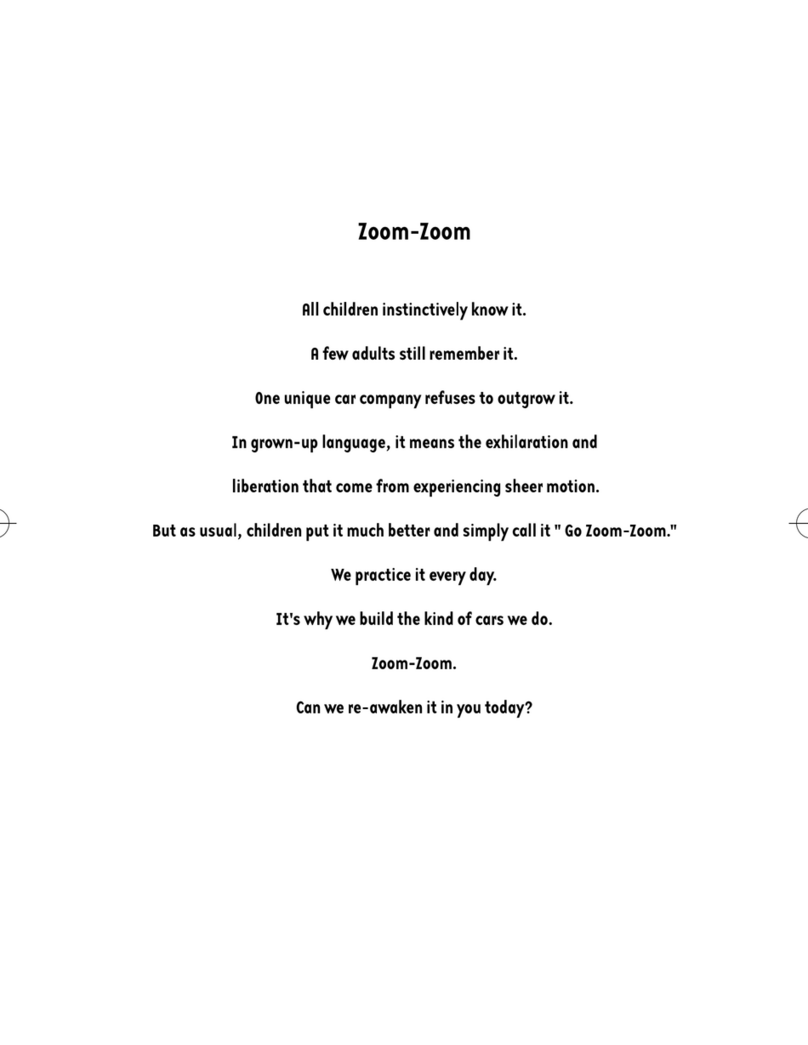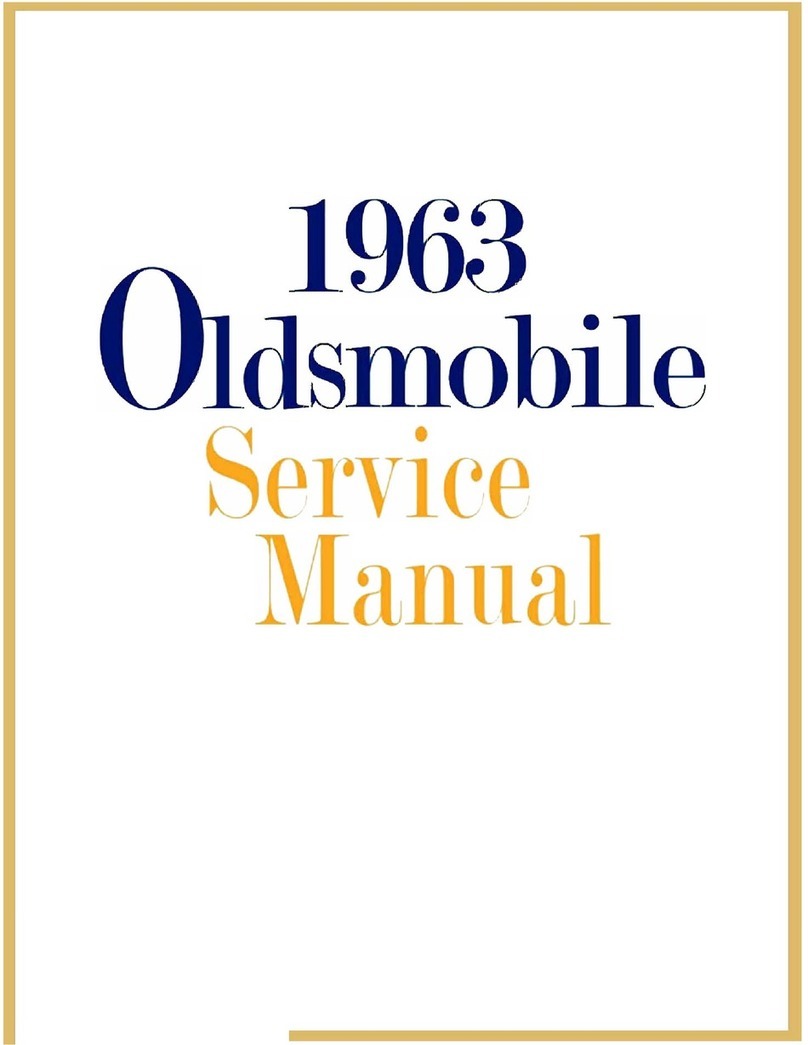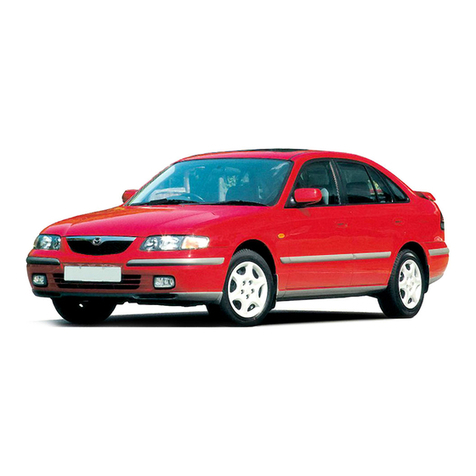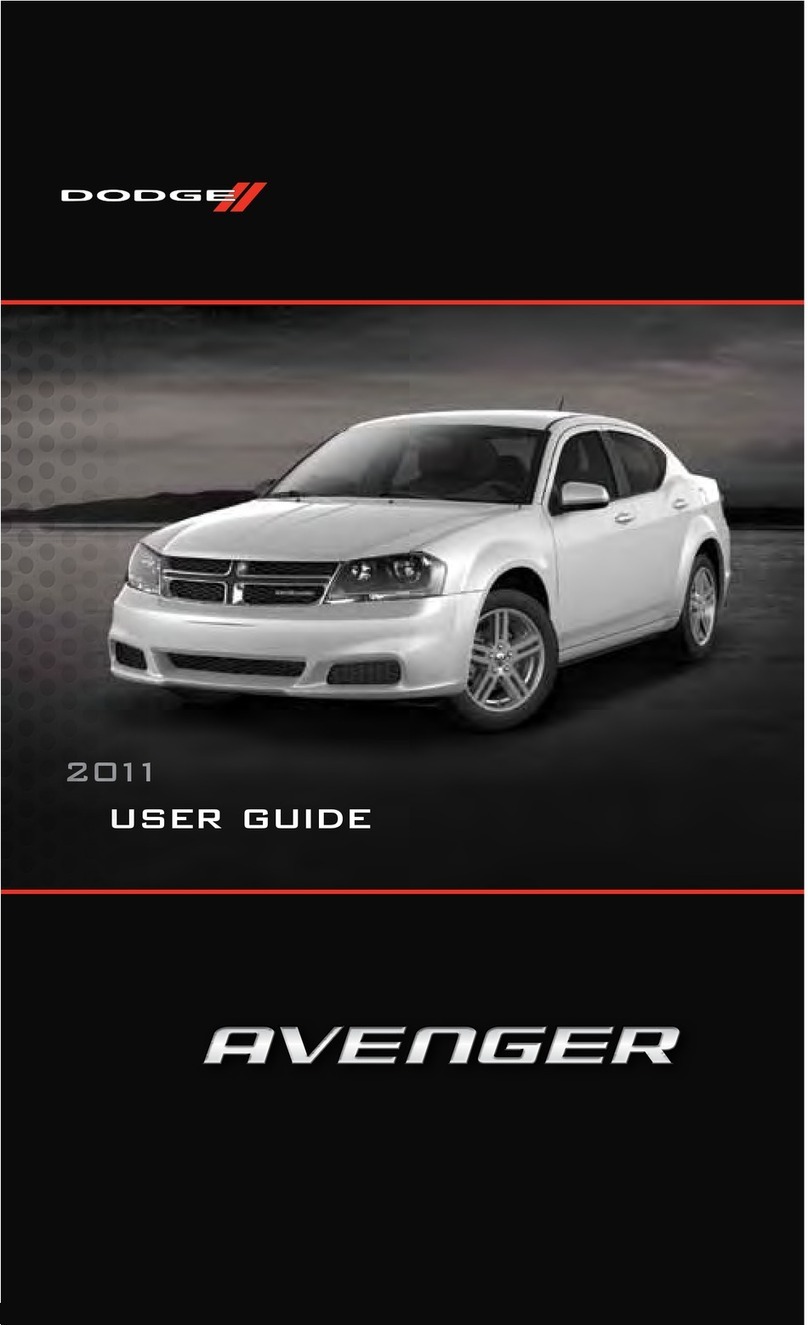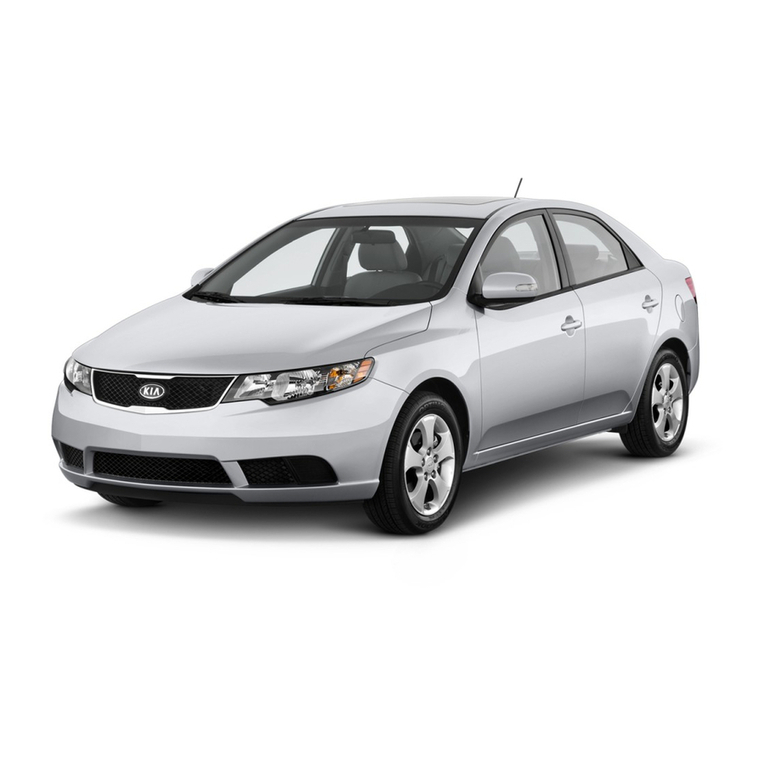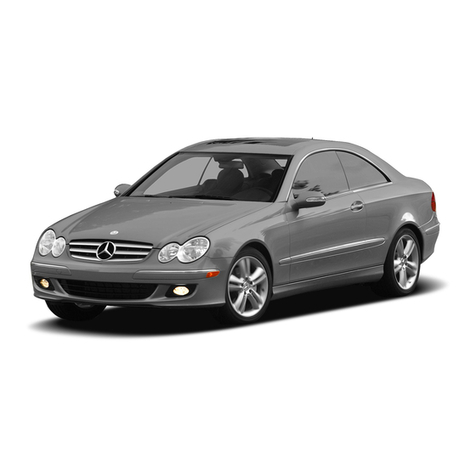GM Chevrolet Nova 1971 Manual

. .
1971
OWNER'S MANUAL
IMPORTANT
OPERATING, SAFETY,
AND
MAINTENANCE
INSTRUCTIONS
GM
CHEVROLET
NOVA
•
www.PlandeGraissage.org

A
WORD
TO
NOVA
OWNERS
.
..
This
manual
has
been
prepared
to
acquaint
you
with
the
operation
and
maintenance
of
your
Nova,
and
to
provide
im-
portant
safety
information.
We
urge
you
to
read
it
carefully
and
follow
the
recommendations
contained
to
help
assure
the
most
enjoyable
and
trouble-free
operation
of
your
vehicle.
When
it
comes
to
service,
remember
that
your
Chevrolet
dealer
knows
your
vehicle
best
and
is
interested
in
your
complete
satisfaction.
Return
to
him
for
Guardian
Maintenance
Service
and any
other
assistance
you
may
require.
To
assist
dealers
in
handling
your
needs
,
Chevrolet
maintains
a
number
of
Zone
Offices
throughout
the
country.
Should
you
have
a
problem
that
cannot
be
handled
through
normal
channels,
follow
the
procedure
presented
on
page
77
of
this
manual
under
the
heading,
"Owner
Relations".
Regarding
warranty,
your
Nova,
when
purchased
new
is
covered
by
the
Chevrolet
New
Vehicle
Warranty
and
the
Policy
on
Chevrolet
Owner
Service.
Complete
details
will
be
found
in
the
1971
Chevrolet
New
Vehicle
Warranty
and
Policy
on
Owner
Service
folder
which
was
given
to
you
by
your
dealer
at
the
time
of
new
car
delivery.
We
would
like
to
take
this
opportunity
to
thank
you
for
choosing
a
Chevrolet
product-and
assure
you
of
our
continuing
interest
in
your
motoring
pleasure
and
satisfaction.
Chevrolet
Motor
Division
,',\
www.PlandeGraissage.org

1971
NOVA
OWNER'S
MANUAL
CHEVROLET
MOTOR
DIVISION
GENERAL
MOTORS
CORPORATION
DETROIT,
MICHIGAN
48202
All
information, illustrations
and
specifications con-
tained in
th
is manual
are
based
on
the latest
pr
(Jd
uct
information cvailable at the time
of
public
at
;h
e
right
is
re
sorved to make changes
at
any tim"
..
" ,
Ill
. '
notice.
Part No. 3991
G30
ST
308-71 Second Edition
feb
. 1971
©
GENERAL
MOTORS
CORPORATION
1971
Table
of
Contents
Page
Before Driving your Car
..........
___
. _
....
_
........
_. .. . . .. . . . .
..
3
Starting and Operating. . .. . .. . . .. . .. . .. . .. . . .. .. . .. . .. . .. . . . . . .
..
11
Safety Checks
...................................................
34
In
Case
of
Emergency
...........................................
_ 39
Air Pollution Control Systems
..................
.
..................
42
Appearance
Care
..
_
..
,
..........................................
48
Service and Maintenance
.........................................
52
Maintenance
Sc
(,edule
..........................
.
.................
66
Specif
ications
(llJ
V, ,
ar
Relations, Servi
ce
Manu
al
s,
Index. .. . . . .. . .
..
72
----
-
--
.
.:.....------------~----------
1
www.PlandeGraissage.org

YOUR CAR'S FIRST
FEW HUNDRED MILES
OF
DRIVING
Sound design and precision manu-
facturing methods will permit you
to operate your new car from its
very first mile without adhering to
a formal "break-in" schedule. How-
ever, during the first few hundred
miles of driving you can, by ob-
serving a few simple precautions,
add to the future performance and
economy of your car.
It
is
recommended that your
speed during the first 500 miles
be confined to a maximum of 60
M.P.H., but do not drive for ex-
tended periods at
anyone
constant
speed, either fast
or
slow. Dur-
ing this period, avoid full throttle
starts and, if possible, abrupt stops.
Gentle braking during the first few
hundred miles of operation will re-
sult in longer brake life and better
future performance. Avoid hard
2
stops especially during the first 200
miles of operation since brake mis-
use during this period will destroy
much future brake efficiency.
Always drive at moderate speed
until the engine has completely
warmed up.
If
you plan to use your new car
for trailer hauling see additional
information on page
9.
www.PlandeGraissage.org

BEFORE DRIVING YOUR CAR
Keys
Two separate keys are provided
for your car.
Each
key has a differ-
ent cross section so that it can be
inserted only in certain locks.
•
Key
with
square
head
(stamped "A") -for ignition
switch, door locks.
• Key with oval head (stamped
"8")
-for all other locks.
The code number of each key
is
stamped on the "knock out" plug
fIJjj
A"~
LOCKS
in the key head.
Your
Chevrolet
dealer removed these plugs and
placed them with the spare set of
keys in the special key envelope
that was given to you
at
time of
delivery.
For
your protection:
• Recordthenumbersonthekeyen-
velope and discard the key plugs.
• Keep the key envelope in a safe
place such as your wallet, Not
In
The
Car.
In
the event the original keys are
lost, duplicates
can
be made by
your dealer
or
a locksmith using
the key code information.
Be sure to lock the glove box or
console compartments and remove
the key from the car whenever it is
necessary to leave the ignition key
with an attendant.
Door Locks
Front side doors can be locked
3
from the inside by depressing the
passenger guard door lock buttons
located on the upper door panel.
All doors
can
be locked from the
outside by first depressing the door
lock button and closing the door.
The
front doors can also be
locked by using the key.
All models have as a standard
safety
feature
overriding
door
locks. When the doors are locked,
the door latch mechanism
is
in-
operative, preventing inadvertent
opening of the door by movement
of the inside handle.
REMINDER:
While
the
car
is
being driven, avoid hanging objects
on the right hand coat hook in such
a way that you block the driver's
vision to the right rear quarter.
www.PlandeGraissage.org

REMINDER:
Always
lock
the
doors when driving, for greater se-
curity in the event of
an
accident
and for security against unauthor-
ized entries.
Seats
Folding seat backs are equipped
with self-latching mechanisms and
release controls designed for the
convenience of entering and exiting
passengers.
Back Locks
The release knob
is
located at the
lower rear of each backrest nearest
the door. Lift the knob upward,
then pull the seatback forward.
Manually Operated
Front Seats
Push the seat adjuster lever to
the right, located at the front of
each front seat, to unlock the seat
and allow adjustment to the front
or rear. As the seat slides forward,
it
tilts slightly to provide best pos-
ture and increased driver ease. Re-
lease the lever to lock the seat in
the desired position.
4
Inside Rearview Mirrors
• Inside mirror (optional) has
day/night control to change re-
flectivity.
• Switch mirror to night position
to reduce glare from following
headlights.
To
raise
or
lower, grasp mirror
and exert sufficient pressure by
pushing or pulling to move mirror
support rod toward or away from
windshield, and up or down. The
upper ball joint, where the support
rod meets the roof, and the knee
www.PlandeGraissage.org

MIRROR
SUPPORT
-
joint
at
the lower end of the rod
work together to permit setting the
mirror at a variety of heights.
Head Restraints
• Head restraints are designed to
help reduce injuries due to
"whiplash."
• Select the position-up
or
down-
which places the top of the head
restraintclosestto the top ofyour
ears.
• Do not use head restraint above
the up detent position.
• Head restraint can be raised by
pulling up until you feel the
spring latch seat in the detent
position.
• To lower, release latch at base of
supporting rod and push down
on restraint.
• Do not operate vehicle with head
restraints removed.
• Head restraint will help protect
rear seat passengers
by
shielding
head restraint mounting hard-
ware on front seat back from im-
pact by rear seat passengers.
5
Occupant Restraint Belts
Lap and shoulder belts provide
added security and comfort for you
and your passengers. Proper use
and care of these belts will assure
continuance of this security.
Lap
Belts -After the front seat
has been adjusted to the satisfac-
tion of the driver, sit erect and well
back in the seat, grasp the buckle
end and the flat metal "eye" end of
your individual belt assembly and
position the belt across the lap
as
LOW ON
THE
HIPS
AS
POS-
SIBLE. Insert the metal eye into
the open end of the buckle until an
audible snap
is
heard. Make sure
the connection
is
secure and, to re-
duce the risk of sliding under the
www.PlandeGraissage.org

belt, adjust
it
to a SNUG
FIT
by
pulling
on
the end of the belt ex-
tending from the buckle.
The
snug
and low positions are essential in
order that the force exerted by the
lap belt in a collision will be spread
over the strong hip bone structure
and not across the soft abdominal
area which could result in serious
injury.
For
retractor-equipped
belts, pull the retractor half of the
belt out to a solid stop to make sure
the belt webbing
is
completely un-
wound from the retractor;then con-
nect the belt and make the neces-
sary adjustments at the buckle for
proper
fit.
To lengthen a lap belt,
place the buckle at right angles to
the belt webbing. The belt will then
slide easily through the buckle.
To
unfasten the lap belt, simply de-
press the push button located in the
center of the buckle.
Automatic locking lap belt re-
tractors are provided for the added
convenience of the driver and out-
board front seat passengers on all
Nova cars
as
an extra cost option.
The automatic-locking retractors
adjust and lock the lap belts into
position automatically after fasten-
ing.
When not in use, shoulder belts
should be secured in the special
storage convenience provision, to
reduce the danger of the metal end
striking an occupant in a sudden
6
stop. When storage provisions are
not
provided,
the
loose
end
mounted on the upper structure
should be fastened to the fioor-
mounted end, and adjusted to re-
move excess slack.
To fasten a lap belt equipped
with an automatic-locking retrac-
tor, pull the webbing across the lap
far enough to permit inserting the
fiat metal "eye" end into the buckle.
If
the webbing
is
notinitially pulled
out far enough to permit buckling,
release the webbing, allowing it to
rewind in the retractor and release
the locking mechanism, so the web-
bing can be pulled outto the proper
length. Once the buckle
is
fastened,
pull the belt firmly across the lap in
the direction of the retractor to ob-
tain a snug
fit.
The retractor will
automatically take up the excess
webbing.
www.PlandeGraissage.org

Shoulder Belts -When properly
worn with a Jap belt, a shoulder
belt can provide additional protec-
tion against impact with the
car
in-
terior by restraining forward mo-
tion of the upper torso in a colli-
sion. This
is
primarily true in case
of frontal impacts, which are the
most frequent type of accident.
Shoulder belts are fastened and
unfastened in the same manner as
lap belts. A shoulder belt should
have sufficient slack to insert a fist's
width between your chest and the
belt. This can be checked by insert-
ing a clenched
fist
between the belt
and your chest with thumb against
chest and back of hand facing up-
ward.
7
Releasing Belts -
To
release the
belts, simply depress the release tab
or button located in the center of
the buckle.
Seat Belt Inspection
And
Care
• Keep sharp edges and damaging
objects away from belts.
•
Periodically
inspect
belts,
buckles, retractors, and anchors
for damage that could lessen the
effectiveness of the restraint
system.
• Havequestionablepartsreplaced.
• Replace belts if cut, weakened,
frayed, or subjected to collision
loads.
• Check that anchor mounting
bolts are tight to the floor.
• Keep seat belts clean and dry.
• Clean only with mild soap solu-
tion and lukewarm water.
• Do not bleach or dye belts since
this may severely weaken belts.
www.PlandeGraissage.org

Child Restraint
Children in automobiles should
be restrained to lessen the risk of
injury in accidents, sudden stops or
other driving conditions. General
Motors has designed an
"INFANT
SAFETY
CARRIER"
specifically
for infants and a "CHILDSAFETY
SEAT" specifically for small chil-
dren which are available from your
Che~rolet
dealer. The Carrier and
Child Seat are designed to utilize
lap belts in your 1971 Nova.
The GeneralMotors InfantSafety
Carrier and the Child Safety Seat
must be used only in passenger
ve-
hicle seats equipped with lap belts.
They must be used only on front
or
rear seats which do not fold or on
folding seats equipped with a latch
to hold the seat back upright (Stan-
dard on 1967 and later model GM
passenger vehicles) .
In
using either
Carrier or Child Seat, read and
comply with all installation and
usage instructions.
Do
not place
more than one child at a time in the
Carrier
or
Child Seat. The Carrier
is
designed for use only with infants
weighing up to 20 pounds. The
Child·
Seat
is
designed for use only
by children weighing up to 30
pounds and who are able to sit up
by themselves. All unused seat belts
near the Carrier
or
Child Seat
should be stowed properly to help
prevent them from striking the
child in the event of a sudden stop
or collision; Shoulder belts should
be stowed in any special storage
convenience provision provided.
Lap belts and shoulder belts with-
but storage provisions should have
buckles latched and belts adjusted
to remove slack.
Cars Not Equipped With
Special Child Restraints
If
a child
is
traveling in a vehicle
not equipped with a General
8
Motors
Infant
Safety Carrier
or
Child Safety Seat, the following
precautions should be taken:
1.
Children should be placed in
the rear seat. Never allow a
child to stand
or
kneel on any
seat.
2. Infants unable to sit up by
themselves should be restrained
by placing them in a covered,
padded bassinet which
is
placed
crossways in the vehicle (width-
wise) on the rear seat. The bas-
sinet should be securely re-
strained with the regular
ve-
hicle seat belts. An alternate
method
is
to position the bas-
sinet so that it rests against the
back of the front seat, again
crossways in the vehicle.
3.
When a child
is
old enough to
sit up by himself in a car, he
should sit on a firm cushion and
use the conventional lap belt to
restrain him at the hips. The
www.PlandeGraissage.org

cushion should be
as
firm
as
practical and just high enough
to enable the child to look hori-
zontally out of the
car
windows.
4. The use of the cushion should
be discontinued
as
soon
as
the
child
is
old enough to see out
of
the car windows without it.
Trailer Hauling
Since passenger cars are de-
signed and intended to
be
used
primarily as passenger convey-
ances, towing a trailer will affect
handling, durability and economy.
Maximum safety and satisfaction
depends upon proper use of cor-
rect equipment and avoiding over-
loads and other abusive operation.
The maximum loaded trailer
weight which you
can
pull with
5.
Do
not use shoulder belts on
children shorter than approxi-
mately 4 feet 7 inches in height.
6. General Motors recommends
that children be restrained
when riding. However, if con-
ditions require that a child must
stand, he should stand
on
the
your Nova depends on what special
equipment has been installed on
your car. We do
not
recommend
pulling any trailer unless the
car
is
properly equipped. Information on
trailer hauling capabilities, special
equipment required, and optional
equipment offered by Chevrolet
is
available
from
your
Chevrolet
Dealer
or
by
writing
Chevrolet
Motor Division, Detroit, Michigan
9
floor directly behind the front
seat. This will minimize the
possibility of his being thrown
from the rear compartment
during a sudden stop. This
method should
be
used only if
more complete restraint can-
not be used.
48202.
Usage of bumper hitches
is
not
recommended; however, rental in-
stallations may be made if in ac-
cord with proper installation and
usage instructions of a reputable
trailer rental agency. Axle mounted
hitches should not be used.
To
assist in attaining good
handling of the car-trailer com-
bination, it
is
important that the
www.PlandeGraissage.org

trailer tongue load be maintained
at
approximately
10%
of
the
loaded trailer weight. Tongue
loads .can be adjusted by proper
distribution of the load in the
trailer, and can be checked by
weighing separately the loaded
trailer and then the tongue.
When towing trailers, tires
should be inflated to the standard
pressure shown on the placard,
affixed to left front door. The
allowable passenger and cargo
load also shown on the same
placard,
is
reduced by an amount
equal to the trailer tongue load
on the trailer hitch.
Maintenance
More frequent vehicle main-
tenance
is
required when using
your car to pull a trailer. Change
the:
1.
Automatic transmission and
rear axle fiuid each 12,000
miles.
2. Engine oil each
60
days or
3000 miles whichever occurs
first.
3. Replace the positive crank-
case ventilation valve each
12 months
or
12,000 miles
whichever occurs first.
Break-in Schedule
In
addition to the new carbreak-
in instructions in this Owner's
Manual, it
is
recommended that
your new Nova be operated for
500
miles before trailer towing.
If
it
is
necessary to tow during
this period, avoid speeds over 50
MPH and full throttle starts.
For
cars already in use the
above precautions should be ob-
10
served whenever a new engine,
transmission or axle
is
installed.
www.PlandeGraissage.org

STARTING
AND
OPERATING
Engine Exhaust Gas Caution (Carbon Monoxide)
Avoid inhaling exhaust gases because
they contain carbon monoxide, which
by
itself is colorless and odorless. Carbon
monoxide is a dangerous gas that can
cause unconsciousness and is potentially
lethal.
The best protection against carbon mon-
oxide entry into the
car
body is a properly
maintained engine exhaust system,
car
body and body ventilation system.
If
you
notice a change in the sound of the ex-
haust system,
if
exhaust fumes are smelled
or
detected in any
other
way inside the
vehicle, or
if
exhaust system or the under-
side or rear of the vehicle is damaged,
have a competent mechanic inspect the
complete exhaust system and nearby body
areas and trunk
lid
lor
broken, damaged,
missing,
or
mispositioned parts, open
seams, holes, or loose connections
or
other deterioration which
could
permit
exhaust lumes to
seep
into the
trunk
or
passenger compartment. Dust or water in
the trunk may be an indication of a prob-
lem in one of these areas.
To
allow
proper
operation
of
ventilation
system, remember
to
keep front ventilation
inlet
grille
clear of snow, leaves or
other
obstruction
at
all
times.
It
is recommended that the vehicle be
inspected
as
outlined above each time the
vehicle is raised for lubrication
or
011
change.
If
at
any time you suspect that
exhaust fumes are entering the passenger
compartment, have the cause determined
and corrected
as
soon
as
possible.
If
you
must drive under these conditions, drive
only with
all
windows fully open. Use
genuine
GM
parts recommended
for
your
vehicle, or equivalent. Also
see
exhaust
system check in the Safety Checks sec-
tion
of
this manual.)
SITTING IN A PARKED
CAR
WITH
ENGINE RUNNING
FOR
AN
EXTENDED
PERIOD IS NOT RECOMMENDED.
Do
not
run engine in confined areas
such
as
garages any more than needed to
move vehicle in
or
out
of
area. When
ve-
11
hicle is stopped in an UNCONFINED area
with the engine running
for
any more than
a short period, the following precaution
should
be
observed:
•
Adjust
heating
or
cooling system to
force outside
air
into
car
with
blower
set
at
medium
or
high speeds,
and
con-
trols set in any position except
"MAX."
The
trunk
lid
should be closed while
driving to help preventInadvertently draw-
ing
exhaust gases into the car.
It
is unwise
to drive
at
high speeds
for
long durations
with the trunk
lid
open. However,
if
for
some reason the trunk must remain open
for
a period while moving, or electrical
wiring or other cable connections to a
trailer must pass through the seal between
trunk
lid
and
body, the following precau-
tions should be observed:
• Close
all
windows.
• Adjust heating or cooling system to
force outside
air
into
car
with blower
set
at
high speed, and controls set in
any position except
"MAX."
• On cars equipped with outside
air
vents in or under instrument panel,
open vents fully.
I
www.PlandeGraissage.org

STEERING COLUMN CONTROLS
Anti-Theft Steering
Column Lock
The anti-theft lock, located on
the right side of the steering col-
umn, has
five
positions:
• Accessory -Permits opera-
tion of electrical accessories
when engine
is
not running.
To
engage, push key in and turn
toward you (counterclockwise).
• Lock -Normal parking posi-
tion. Locks ignition
and
pro-
vides added theft protection by
preventing normal operation of
steering wheel
and
shift con-
trols. Key cannot be returned
to "lock" position
and
removed
until transmission
is
placed in
"park" (automatic transmission
models)
or
in reverse on manual
transmission models.
•
Off
-Permits turning engine
off without locking steering
wheel and shift controls.
• Run -Normal operating posi-
tion.
12
• Start -Permits engagement of
starter.
NOTE:
The anti-theft steering
column lock
is
not a substitute
for the parking brake. Always
set the paking brake when leaving
the car unattended.
When
parking-
• Always
let
go
of
steering wheel before
turning ignition key to
lock
position.
• When parking on a
hill
with wheels
turned toward curb, be sure
car
has
come to complete stop before turn-
ing key to
lock
position.
Turning wheels after
car
has stopped
"winds
up"
steering system, which can
result in a
"spring
back"
ot
the steering
wheel when the steering column
lock
Is
released. As a further precaution, never
reach through the steering wheel for any
reason.
When
leaving your
car
unattended,
• Set parking brake.
• Place automatictransmission selector
in
Park (Reverse for manual trans-
mission).
• Turn key to LOCK position.
• Remove key (the buzzer
will
remind
you.)
•
Lock
a/l doors.
www.PlandeGraissage.org

Starting
Engine
Automatic Transmission
Models
1.
Apply
the
foot
brake.
2. Place transmission selector
in
"P"
or uN"(UP" preferred).
A starter safety switch prevents
starter operation while the trans-
mission selector
is
in any drive
position.
(If
it
is
necessary to
re-start the engine with the car
moving, place the selector lever
in "N".)
3. Depress accelerator pedal and
activate starter
as
outlined be-
low for different conditions.
•
Cold
Engine -Fully de-
press accelerator pedal and
slowly release.
With
foot
oD
the pedal, crank the engine
by turning the ignition key
to the Start position-release
when engine starts.
If
engine starts,
but
fails to
run, repeat this procedure.
When
engine
is
running
smoothly, the idle speed may
be reduced by slightly de-
pressing the accelerator pedal
and then slowly releasing.
•
Warm
Engine -Depress ac-
celerator pedal about halfway
and hold while cranking the
engine.
• Extremely
Cold
Weather
(Below
0°
F.)
Or
After Car
Has
Been
Standing Idle
Several
Days-
Fully depress and release
accelerator pedal two or three
times before cranking the
engine. With foot
oD
the ac-
celerator pedal, crank the
engine by turning the key to
the Start position and release
when engine starts.
13
Manual Transmission
Models
1.
Apply parking brake and shift
transmission to neutral.
2.
Hold
clutch
pedal
to
floor
throughout the starting proce-
dure to assure that car
is
not
started "in gear."
3.
Operate accelerator pedal and
starter
as
outlined in step 3
(under Automatic Transmission
Models).
Engine Flooded
Depress accelerator pedal and
hold to floor while starting until
engine
is
cleared of excess fuel
and
is
running smoothly. Never
"pump" the accelerator pedal.
Warm-Up
Always let the engine idle for
20 to 30 seconds after starting
and drive at moderate speeds for
several miles, especially during
cold weather.
www.PlandeGraissage.org

Driving
with
Chevrolet
Automatic
Transmissions
The
Powerglide and the Turbo
Hydra-Matic 350
and
400
are com-
pletely
automatic
transmissions.
The Torque Drive
is
a manually
operated
(1
st to Hi) automatic
transmission. All replace the stan-
dard clutch and transmission.
Powerglide, Turbo Hydra-
Matic 350 and Turbo Hydra-
Matic 400
After starting the engine with the
selector lever in N (Neutral)
or
P
(Park)
position select the range de-
sired (see tables) and depress the
accelerator.
Torque Drive
On
vehicles
equipped
with
Torque Drive transmissions, place
the selector in
"1
st"
position for for-
ward drive. Gradually depress ac-
celerator .to obtain acceleration of
30
mph
or
over. Then placeselector
Powerglide
lever in "Hi".
DO
NOT
SHIFT
IN-
TO
OR
DRIVE
IN
"1ST"
ABOVE
55 MPH. The selector lever may be
moved freely between "Hi"
and
"1
sf'
but
must be raised in order to
shift from "Hi" to Neutral
or
Re-
verse. The lever must also be raised
in order to shift into or out of Park.
All Automatic Transmissions
A gradual start with a steady in-
crease in accelerator pressure will
P-PARK
Use only when
car
is
stopped.
R-REVERSE
For
backing
car-from
stop.
N-NEUTRAL
D-DRIVE
L-LOW
For standing (Brakes Applied).
For forward driving.
Depress accelerator to floor for extra acceleration at speeds
(depending on engine, axle and tire combination) as high
as 40 to
60
mph.
For hard pulling through sand, snow
or
mud, and
for
climbing or descending steep grades. Do not
shift
to
Labove
40
mph.
14
www.PlandeGraissage.org

result in best possible fuel economy.
Rapid acceleration for fast starts
will result in greater fuel con-
sumption.
Automatic
transmISSIon
shift
quadrants of all GM cars continue
the uniform sequence of selector
positions. This particularly benefits
multicar families and those who oc-
casionally drive other cars. Shift in-
dicators are arranged with "Park"
position
at
one end, followed in
se-
quence by "Reverse", "Neutral"
Torque Drive
Park-Use
only when car is stopped.
R
-Reverse-For
backing car from stop.
N
-Neutral-For
standing (brakes applied).
Hi
-High-For
forward driving above
30
mph.
1st
-Low-For
initial forward acceleration to
30
mph.
Us
.e
"1
st"
position for
additional performance during acceleration or for braking effect when
descending steep hills.
DO
NOT SHIFT INTO
"1ST"
FROM
"HI"
ABOVE
55
MPH.
NOTE: In stop and go driving below 30 mph, keep selector lever in
"1ST"
position to
prevent overheating of transmission oil. Continuous driving in
"Hi"
range below 20 mph
is equivalent to severe service operation and will require more frequent maintenance
intervals (see page 57).
15
www.PlandeGraissage.org

and the forward driving ranges. All
automatic
transmissions
are
equipped
with
a
starter
safety
switch designed to permit starting
the engine only when the transmis-
sion
is
in the "Park"
or
"Neutral"
position.
For
additional engine
braking
effect,
as
sometimes
needed in mountainous driving,
place the transmission in an inter-
mediate or low range.
Turbo Hydra-Matic 350 and 400
Floor Console Shift Lever
The
floor console shift lever may
be moved freely between Neutral
and Drive
and
(on
the
Turbo
Hy-
dra-Matic) between 1 and 2. Press
lightly on button
as
you shift into
Reverse
or
Low
(2
on Turbo
Hydra-Matic). Depress the button
fully when shifting into
or
out of
Park
position. Exercise care in de-
pressing button to prevent uninten-
tional shifts to Park, Low
(2)
or
Reverse.
P-PARK
Use only when car
is
stopped.
R-REVERSE
Console
N-NEUTRAL
3
O-DRIVE
2 L,
-LOW
,
1 L,
-LOW,
16
For backing
car-from
stop.
For standing (Brakes Applied).
For forward driving. Depress accelerator to floor for
extra acceleration below
65
mph; depress accelera-
tor
half-way
at
speeds below 30 mph.
For driving in heavy traffic
or
on
hilly
terrain. Shift
into
L,
or 2 at any vehicle speed.
For hard pulling through sand, snow or mud,
for
climbing
or
descending steep grades.
www.PlandeGraissage.org

Driving
with
Manual
Transmissions
The
3-speed manual transmis-
sion shift positions follow the stan-
dard
pattern shown on the illustra-
tion. The 4-speed transmission shift
lever, extending from the floor, has
its special shift pattern diagram lo-
cated on the knob or floor plate.
Depress the clutch pedal fully be-
fore attempting to shift to a differ-
ent gear, then release the pedal to,
move in that gear. Shifting into 2nd
and 3rd gear as soon as possible
will add appreciably to your fuel
economy.
Both transmissions, being fully
synchronized, may be downshifted
into 1st gear at any speed below 20
m.p.h. Shift into Reverse gear only
after the car has stopped Always
depress and release the clutch pedal
fully when shifting.
On
Four-Speed
transmission the shift linkage may
be adjusted to allow "short stroke"
shift lever operation. See your
Chevrolet Dealer.
Also, shift into "Reverse" before
shutting off engine. This will permit
the ignition key to be turned to the
"Lock" position.
REMINDER:
Before descending a
steep
or
long grade, down a moun-
tain
or
hillside, reduce speed and
shift into a lower gear
(for
either
automatic
or
manual transmission
cars). Use the brakes sparingly to
prevent them from overheating and
thus reducing brake effectiveness.
17
Turn Signals and Lane
Change Feature
The turn signal lever
is
located
on
the left side of the steering col-
umn immediately under the steer-
ing wheel. The lever is moved up-
ward to signal a right turn and
downward to signal a left turn.
Lamps on the front and rear of the
car
transmit this signal to other
www.PlandeGraissage.org

motorists
and
pedestrians.
The
ig-
nition switch must be in the "ON"
position in order for the turn sig-
nals to be operational. This feature
prevents battery drain if
the
lever
is left in
an
"ON"
position when
your car
is
not in use.
In
a normal turning situation
such
as
turning a corner, the
tum
signal
is
cancelled automatically
after the
tum
is completed. How-
ever, in some driving maneuvers
such
as
changing lanes on an ex-
pressway, the steering wheel
is
not
turned back sufficiently after com-
pleting the turn to automatically
cancel the turn signal.
For
con-
venience in such maneuvers, the
driver can flash the turn signals by
moving the turn signal lever
part
way
(to
the first
stop)
and holding
it there.
The
lever returns to the
neutral
or
cancelled position when
the driver releases his hold on the
lever.
A green light on the instrument
cluster flashes to indicate proper
operation of the front
and
rear turn
signal lamps.
If
the indicator lamp
remains on and does not flash,
check for a defective lamp bulb.
If
the indicator fails to light when the
18
lever
is
moved, check the fuse
and
indicator bulb.
Power Steering
Power steering assist
is
provided
by a hydraulic pump driven by the
engine. When the engine
is
not
run-
ning
or
if the power steering pump
drive belt breaks, the car can still
be steered,
but
much greater steer-
ing effort will be required.
Holding Car
on
an Upgrade
When stopped on an upgrade,
maintain your position by applying
the brakes. Never hold the car in
place by accelerating engine with
transmission in gear. This could
cause damage by overheating the
transmission (automatic)
or
clutch
(manual).
www.PlandeGraissage.org
Other GM Automobile manuals
